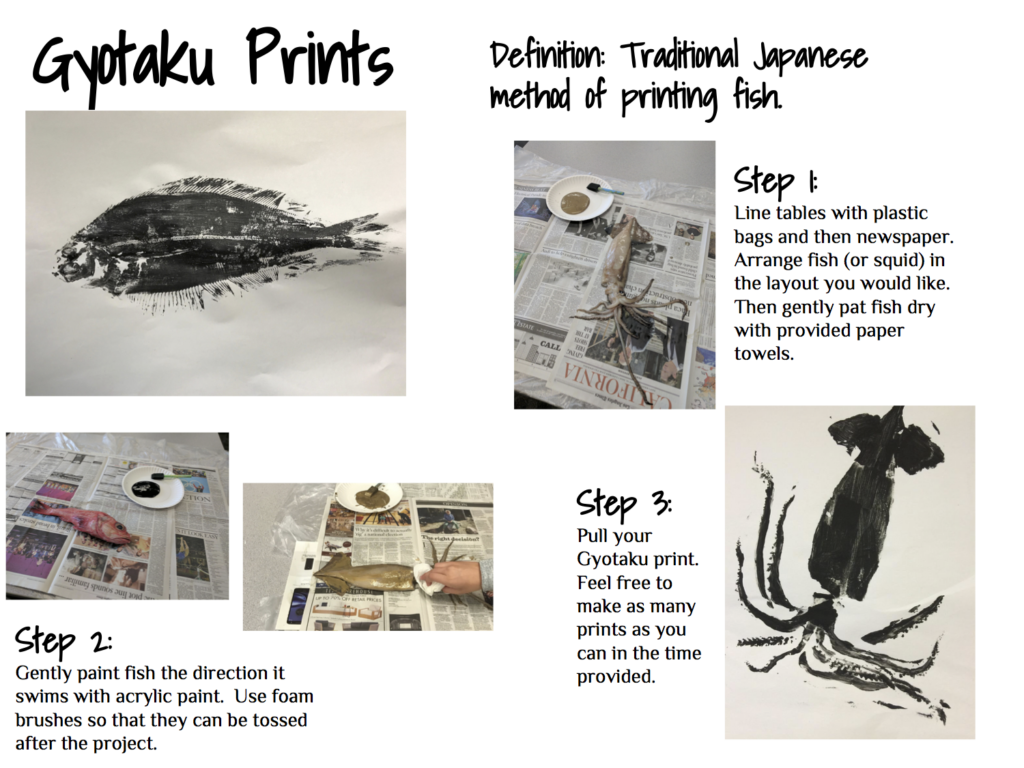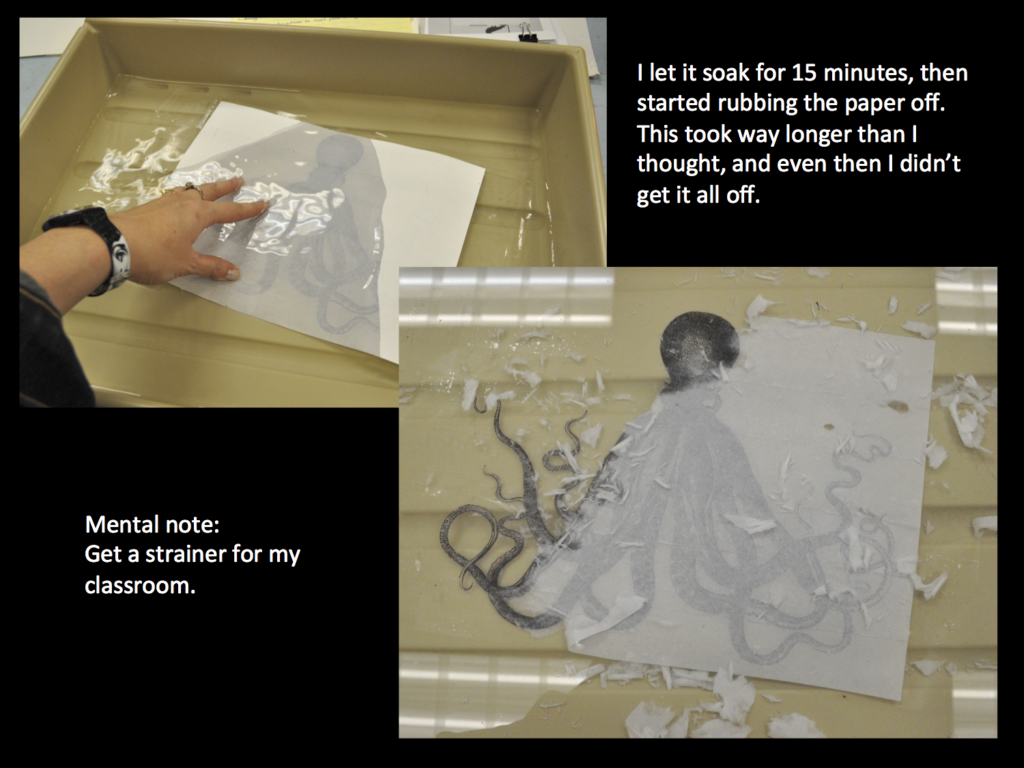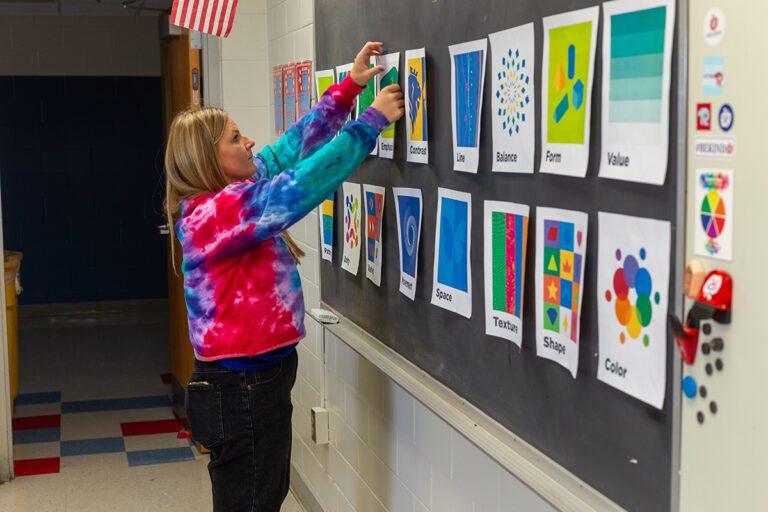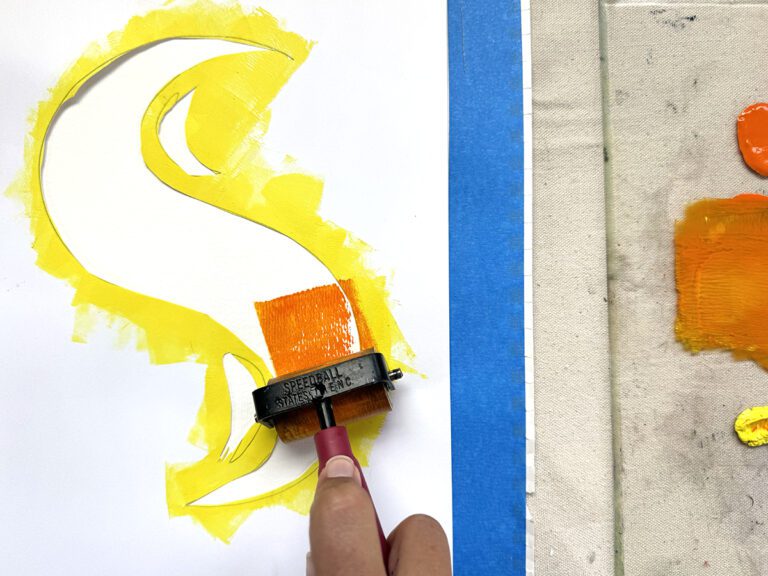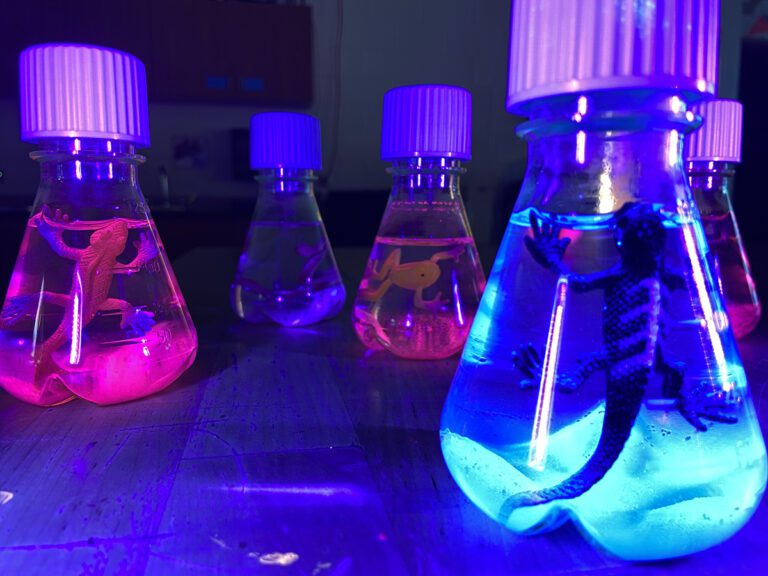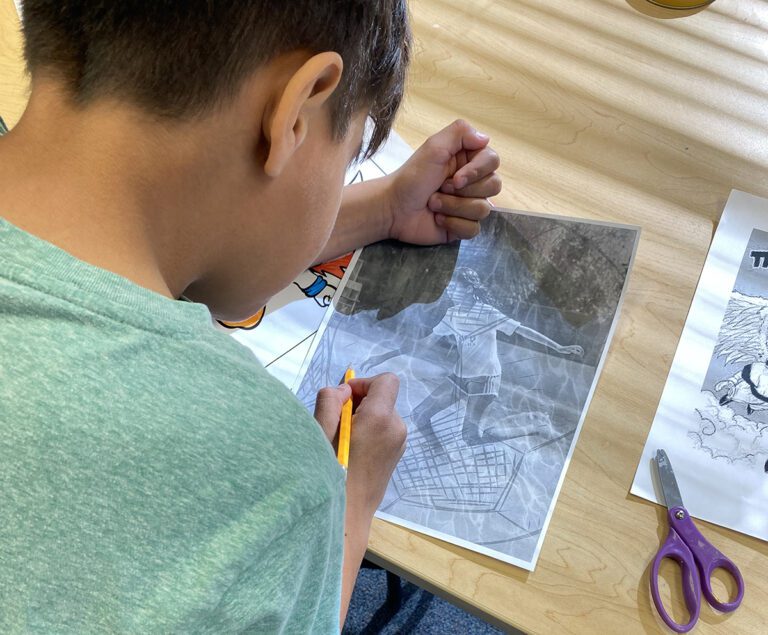Printmaking can be intimidating to art teachers. There is so much terminology and so many different processes; it’s easy to feel overwhelmed. This is particularly true if you’ve never taken a specific printmaking course! If you’re an art education generalist, it can be stressful to introduce your students to unfamiliar media.
But, it’s never too late to learn new techniques!
This is exactly the sentiment two students in a recent section of Studio: Printmaking decided to run with. During an assignment titled, “Alternative Printing Techniques,” students Heidi Kniseley and Fiona Walker pursued two different, yet equally interesting, avenues.
The assignment asks students to explore a variety of ways to engage students in printmaking in ways they may not have considered previously. Like many of the open-ended assignments in AOEU courses, this assignment leaves room to explore your personal interests and passions. Whether you’re familiar with a medium or not, there’s always the opportunity to explore something new!
Heidi’s Take
 California middle school art teacher, Heidi Kniseley, decided she wanted to explore the Japanese art of Gyotaku. Not only did she use a real fish, but she also scored a squid to ink and print! Heidi, went on to complete the process with her 7th-grade students.
California middle school art teacher, Heidi Kniseley, decided she wanted to explore the Japanese art of Gyotaku. Not only did she use a real fish, but she also scored a squid to ink and print! Heidi, went on to complete the process with her 7th-grade students.
When others in the class asked about her experience, Heidi had this insight to share. “The fishy smell wasn’t too bad. I did open the doors and try to keep fresh air flowing in. I purchased the uncleaned fish pretty cheaply at an Asian market near me, spending about $15 to buy enough for nine stations.
My middle school students thought it was pretty cool to use real fish, which created buy-in and excitement for the project. The students had a blast with this assignment and, with a little preparation, the cleanup wasn’t bad. I would highly recommend real fish!”
If you’re curious, Heidi was kind enough to share her process board so you can see exactly what she did.
Download Heidi’s Process Board
Fiona’s Take
 Fiona Walker, a high school art teacher in Milpitas, CA, went about the Alternative Printing Techniques assignment a bit differently, but her subject matter was uncannily related! Fiona combined monoprinting and a tape transfer to create this octopus on a textured background.
Fiona Walker, a high school art teacher in Milpitas, CA, went about the Alternative Printing Techniques assignment a bit differently, but her subject matter was uncannily related! Fiona combined monoprinting and a tape transfer to create this octopus on a textured background.
In talking about the assignment, Fiona wrote, “This lesson wins. It was my absolute favorite so far! I plan to incorporate both the transfers and the tabletop monoprints into my curriculum.”
Plus, as she was working on the assignment, she stumbled upon a brand new idea to bring to her students. She explained it this way, “I want to have And-Now-For-Something-Completely-Different Days. My classroom is flipped, so the kids work at their own pace. I’ve found that this can be a little isolating. So, what if, on random days, I surprise them with a crazy, random technique we can all do together in one day? I think it would keep them on their toes, and break up the monotony a bit!”
You can check out Fiona’s final monoprint with tape transfer overlay below.
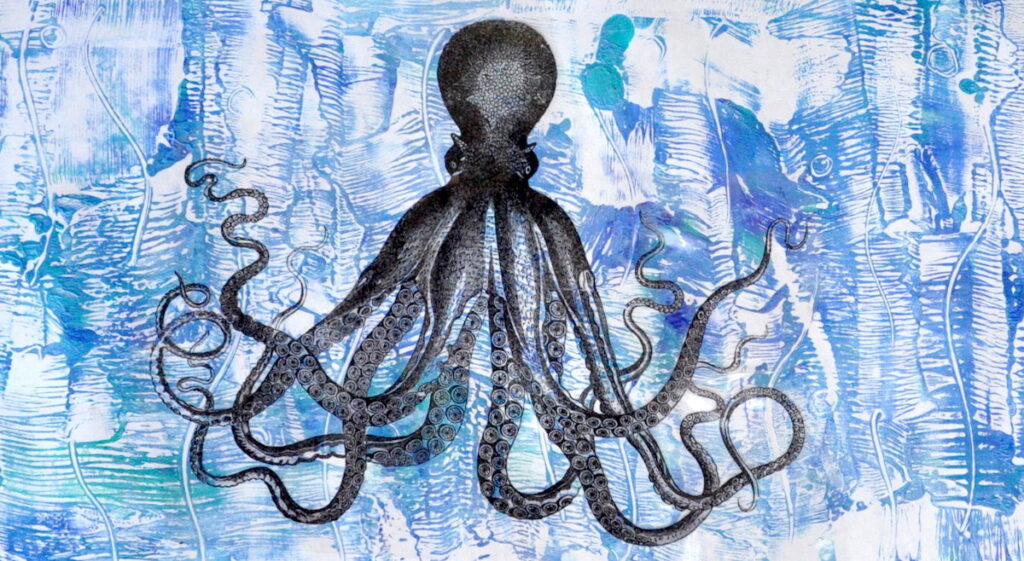
And, just like Heidi, Fiona was gracious enough to share her process board (you can see all the pages when you download it) if you’d like to dig deeper!
Download Fiona’s Process Board
As you can see, when you enroll in an AOEU studio course, you get the chance not only to explore new techniques and create personally meaningful artwork but also to design lesson plans and instructional tools specific to your students and classroom.
Both Fiona and Heidi were able to pinpoint a unique printmaking idea and then translate that idea into an engaging lesson. If you’re looking for an opportunity to freshen up your printmaking curriculum and explore some art-making of your own, taking Studio: Printmaking is a choice you won’t regret!
What non-traditional printmaking methods do you teach your students?
What printmaking techniques do you find engage students the most?
Magazine articles and podcasts are opinions of professional education contributors and do not necessarily represent the position of the Art of Education University (AOEU) or its academic offerings. Contributors use terms in the way they are most often talked about in the scope of their educational experiences.

